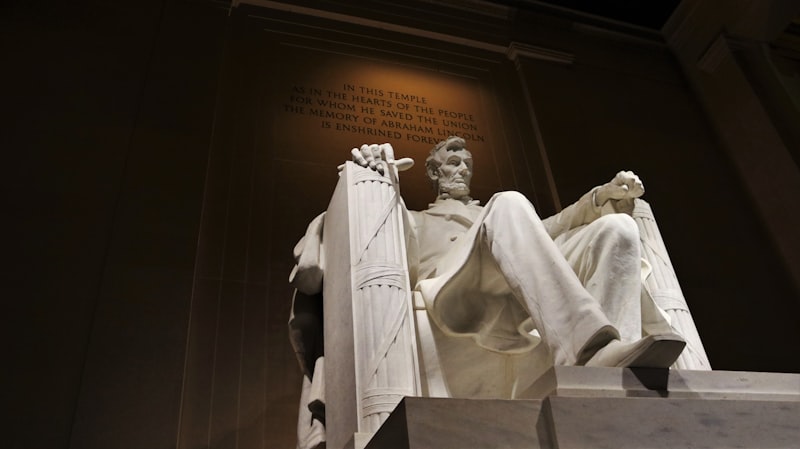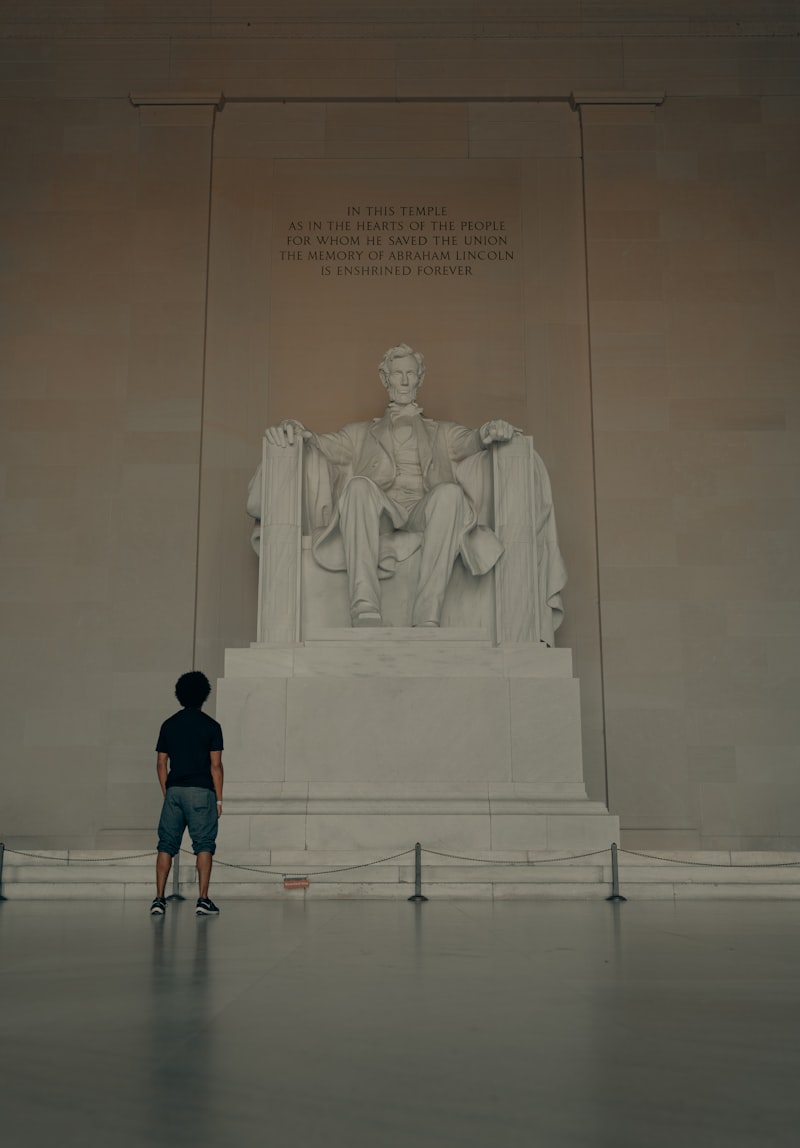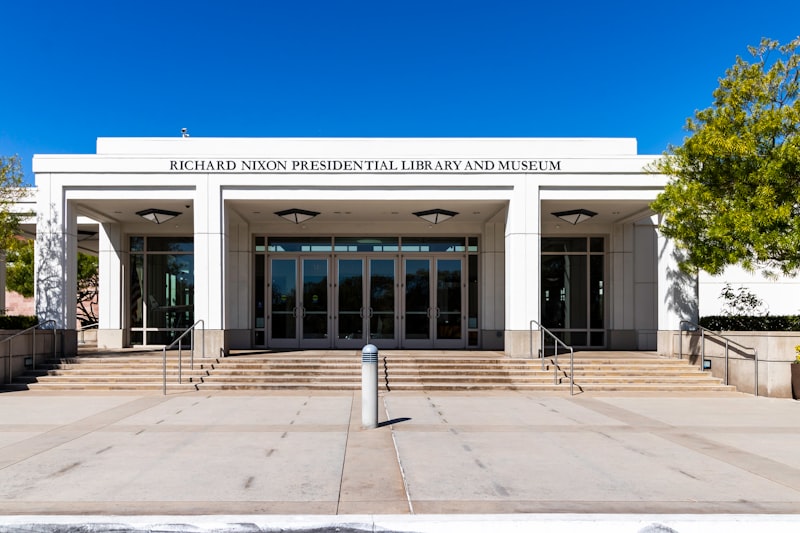One of the most infamous presidential assassinations occurred in 1865, when Abraham Lincoln, the 16th President of the United States, was fatally shot by John Wilkes Booth at Ford’s Theatre in Washington, D.C. Lincoln’s assassination sent shockwaves across the country and forever altered the course of American history during the tumultuous Reconstruction era.
Another tragic event unfolded in 1963 when President John F. Kennedy was assassinated in Dallas, Texas, sparking widespread grief and conspiracy theories that continue to intrigue historians and the public alike. The assassination of JFK highlighted the vulnerability of even the most well-protected leaders and underscored the need for enhanced security measures.
Not all attempts on presidents’ lives result in tragedy, but each one serves as a chilling reminder of the potential dangers faced by those in positions of power. Ronald Reagan narrowly escaped death in 1981 when he was shot and wounded by John Hinckley Jr. in Washington, D.C. Reagan’s survival was seen as a testament to his resilience and prompted increased security protocols for future presidents.
Presidential assassinations and attempts are not confined to the United States alone. Around the world, leaders have been targeted for political, ideological, or personal reasons, leaving lasting scars on their nations and shaping international relations. These events provoke reflection on the fragility of democracy and the profound impacts of violence on political stability.
The history of presidential assassinations and attempts is a sobering tale of tragedy, resilience, and the enduring impact of violence on political systems. These events continue to fascinate and educate, reminding us of the complexities and challenges inherent in leadership on the global stage.
From Lincoln to Kennedy: Unraveling America’s Presidential Assassinations
Imagine the course of history altered by the sinister act of assassination not once, but twice in America’s highest office. The tales of Abraham Lincoln and John F. Kennedy, two iconic presidents separated by a century, are bound together by the tragic thread of assassination. These events, shrouded in conspiracy and speculation, continue to captivate the public imagination.
Abraham Lincoln, the 16th President of the United States, met his untimely end on April 14, 1865, at Ford’s Theatre in Washington, D.C. His assassin, John Wilkes Booth, shot him in the head during a performance, forever changing the nation’s trajectory just days after the end of the Civil War. Lincoln’s death marked a profound moment in American history, stirring grief and sparking a manhunt for Booth, who was later found and killed.
Over a century later, the nation was rocked by another tragic assassination, that of John F. Kennedy on November 22, 1963, in Dallas, Texas. The youthful and charismatic 35th President was fatally shot while riding in a motorcade, leaving the country in shock and mourning. Lee Harvey Oswald was arrested for the crime but was himself assassinated before standing trial, leaving behind questions and conspiracy theories that linger to this day.
These assassinations transcend mere historical events; they have become enduring symbols of loss and speculation. The lives and legacies of Lincoln and Kennedy continue to be studied, debated, and remembered for their leadership, vision, and the mysteries surrounding their deaths. How could such pivotal figures in American history meet such tragic fates? What if these events had never occurred? These questions fuel endless fascination and intrigue among historians and the public alike.
Failed Plots and Close Calls: Notable Attempts on US Presidents’ Lives
One of the earliest recorded attempts occurred in 1835, when Richard Lawrence attempted to assassinate President Andrew Jackson. Lawrence’s two pistols misfired, despite being loaded, leading Jackson to famously confront his would-be assassin with a cane.


Abraham Lincoln, revered for his leadership during the Civil War, faced assassination in 1861 during a covert effort to sabotage his train journey to Washington, D.C., for his inauguration. Fortunately, Pinkerton agents foiled the plot.
James A. Garfield, inaugurated in 1881, fell victim to an assassin’s bullet while at a train station in Washington, D.C. The shooter, Charles J. Guiteau, motivated by a delusional belief that he deserved a political appointment, succeeded in fatally wounding the president.

Theodore Roosevelt, known for his robust personality and progressive reforms, survived an assassination attempt in 1912. Shot in the chest by John Schrank during a campaign speech, Roosevelt, remarkably, insisted on delivering his address before seeking medical attention.

John F. Kennedy, whose presidency symbolized hope and change, tragically succumbed to an assassin’s bullet in 1963. Lee Harvey Oswald, a former Marine with ties to communist ideologies, fired shots from a Dallas warehouse, forever altering the course of American history.
Ronald Reagan, during his presidency in 1981, faced a near-fatal gunshot wound from John Hinckley Jr. outside a Washington, D.C., hotel. The incident prompted new security measures and highlighted vulnerabilities in protecting public officials.
Each attempt on a U.S. president underscores the gravity of the office and the dangers inherent in leadership. These moments of peril, though distressing, also showcase the resilience and resolve of the American spirit in the face of adversity.
Beyond America: Global Perspectives on Presidential Assassinations
Presidential assassinations, a topic often shrouded in intrigue and tragedy, extend far beyond the borders of America, resonating deeply within the annals of global history. These pivotal events, marked by their profound impact on nations and societies, serve as poignant reminders of the vulnerabilities of leadership and the complexities of political power.
Across the world, from Europe to Asia and beyond, the specter of presidential assassinations has left enduring scars on the collective consciousness of societies. Each instance unveils a unique narrative, blending political intrigue with personal tragedy. Whether in the vibrant streets of Latin America or the historic corridors of Europe, these events have shaped the course of nations, sparking debates on security, governance, and the fragility of democracy.
Consider the tragic fate of Archduke Franz Ferdinand of Austria, whose assassination in Sarajevo in 1914 ignited the flames of World War I, reshaping the geopolitical landscape of Europe. This single act of violence cascaded into a global conflict, illustrating the far-reaching consequences of targeting a nation’s leader.
Moving to more recent times, the assassination of Indian Prime Minister Indira Gandhi in 1984 underscored the vulnerability of leaders in rapidly evolving political landscapes. Her death sent shockwaves through India and the world, highlighting the volatile intersection of power, politics, and public sentiment.
In examining these incidents, one cannot overlook the broader implications for global governance and security. How do nations protect their leaders while maintaining the openness and accessibility crucial to democratic ideals? What lessons can be gleaned from history to prevent such tragedies from recurring?

As we navigate the complexities of presidential assassinations beyond America, we uncover not only tales of loss and resilience but also enduring questions about the nature of leadership and the intricate tapestry of human ambition and conflict. Each story, whether in the bustling capitals of Africa or the serene landscapes of Oceania, adds another layer to our understanding of the delicate balance between power and peril.
The global perspective on presidential assassinations transcends mere historical events, offering profound insights into the resilience of nations and the indelible imprint of leadership on the world stage.
Conspiracy Theories and Controversies: What Really Happened in Presidential Assassinations?
Presidential assassinations throughout history have often been shrouded in mystery and intrigue, sparking numerous conspiracy theories and controversies. These events, which profoundly impacted nations and altered the course of history, continue to captivate the public’s imagination. But what lies beneath the surface of these tragic moments in history?
One of the most famous cases is the assassination of President John F. Kennedy in 1963. The official account suggests Lee Harvey Oswald acted alone, firing shots from the Texas School Book Depository in Dallas. However, numerous conspiracy theories propose alternative scenarios involving multiple gunmen or even government involvement. The mystery surrounding the “grassy knoll” and the infamous “magic bullet” theory continue to fuel debates and speculation to this day.
Another notable incident is the assassination of Abraham Lincoln in 1865. John Wilkes Booth, an actor and Confederate sympathizer, shot Lincoln at Ford’s Theatre in Washington, D.C. Booth’s motive was rooted in his fervent support for the South during the Civil War. Despite the straightforward explanation, conspiracy theories have surfaced suggesting that Booth did not act alone or that there was a larger conspiracy within the Confederate leadership.
Moving to more recent times, the assassination of Robert F. Kennedy in 1968 also raised questions. Sirhan Sirhan, a Palestinian Arab, was arrested for the murder. However, some conspiracy theories claim there was a second shooter or that Sirhan was manipulated or coerced into committing the act. The circumstances surrounding the assassination remain contentious, with ongoing debates about the true nature of events that tragic night in Los Angeles.
The Psychology of Assassins: Understanding Motives and Methods
Ever wondered what drives individuals to become assassins? Delving into the psychology of assassins unveils a complex web of motives and methods that intrigue and sometimes shock. Unlike conventional criminals, assassins often operate with meticulous planning and a chilling determination.
The motives behind assassinations vary widely, from political agendas to personal vendettas. Political assassins, for instance, may see themselves as agents of change, driven by ideological fervor or a desire to remove perceived obstacles to their cause. Personal vendettas can lead individuals to take extreme measures, believing their actions are justified by past grievances.
Psychologically, assassins may exhibit traits such as high intelligence, resilience, and a capacity for strategic thinking. These traits enable them to plan and execute their missions with precision, often evading detection until the critical moment. In some cases, assassins may even view their actions as a form of justice, serving what they perceive as a higher moral purpose.
Methods used by assassins also reflect their psychological profile. Whether through covert operations, sniper tactics, or direct confrontations, assassins employ methods designed to achieve maximum impact with minimal risk to themselves. The choice of method often aligns with their skills, resources, and the specific circumstances surrounding their target.
Understanding the psychology of assassins goes beyond mere curiosity; it sheds light on the darker aspects of human behavior and societal dynamics. It prompts us to contemplate the thin line between righteousness and ruthlessness, and the profound impact of individual actions on the course of history.
This article aims to capture the intrigue and complexity surrounding the topic while maintaining a conversational tone and engaging the reader with rhetorical questions and descriptive language.
Frequently Asked Questions
How did presidential security evolve after assassination attempts?
Explore the evolution of presidential security measures following assassination attempts. Learn how advancements in technology, intelligence gathering, and procedural changes have enhanced protection protocols for heads of state.
How many US presidents have been assassinated?
This FAQ provides a concise answer to how many US presidents have been assassinated throughout history. It aims to give clear and factual information without additional commentary.
Who attempted to assassinate US presidents and why?
This FAQ answers who attempted to assassinate US presidents and their motivations. It provides concise details on historical events involving assassination attempts on US presidents, focusing on the individuals involved and their reasons.
What were the outcomes of notable presidential assassination attempts?
Learn about the outcomes of significant presidential assassination attempts in this concise FAQ. Discover how these events impacted history and shaped political landscapes.
What were the most famous presidential assassinations in history?
Explore some of history’s most infamous presidential assassinations, detailing pivotal events that shaped nations.


